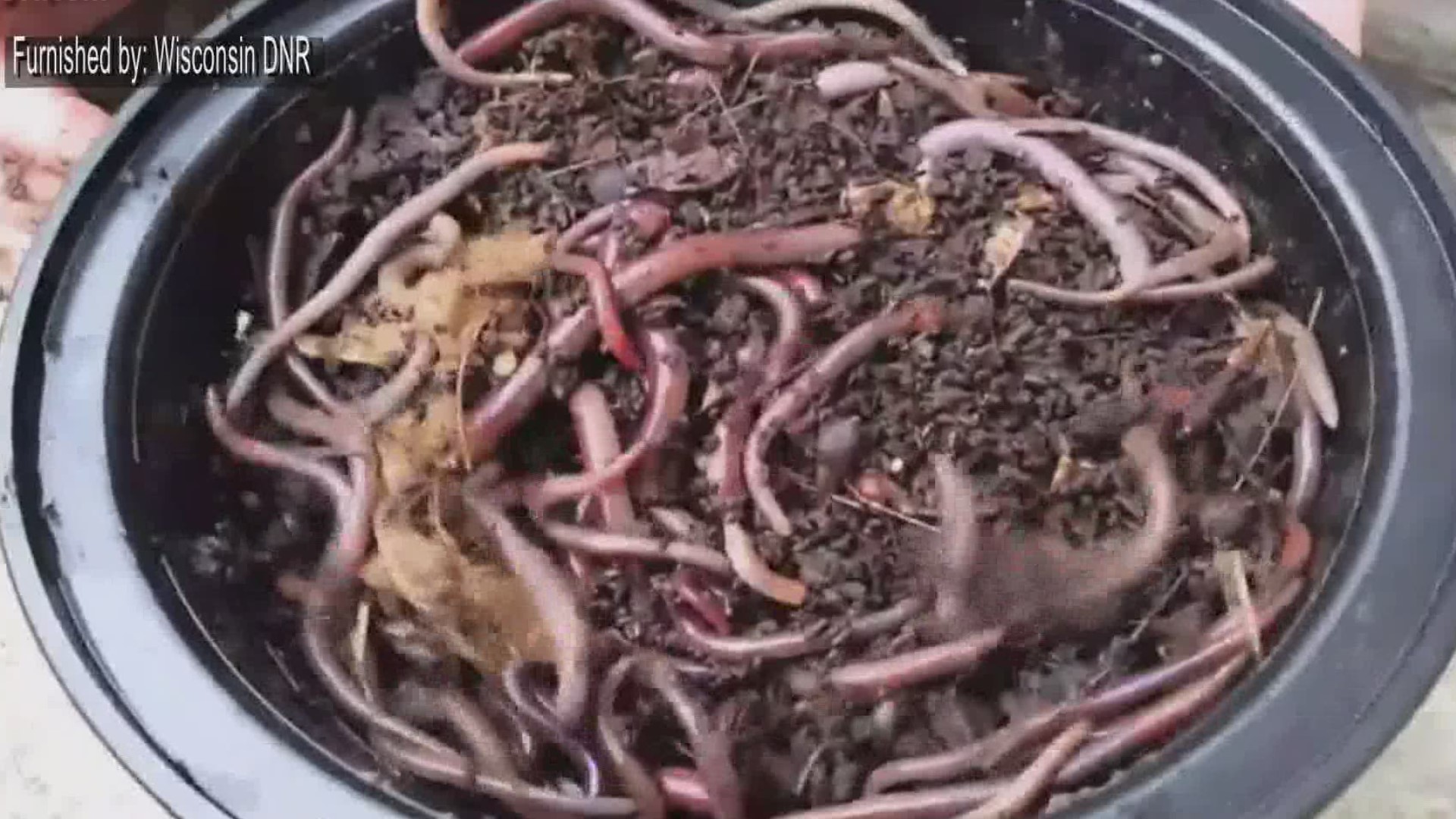GOLDEN VALLEY, Minn. — Jumping worms are a hot topic these days. No one wants them and yet they have been confirmed in much of the metro and parts of southeastern Minnesota, along with a few counties in Wisconsin. This map shows their current reported range.
So we are revisiting a conversation we had with the Arboretum about these nasty buggers.
First up, why the name jumping worms?
“When you barely tap them, they start to thrash wildly around," says Erin Buchholz with the Arboretum's Integrated Pest Management.
Why are they so bad?
Buchholz adds, “Jumping worms live a little closer to the soil surface where we have leaf litter and tree seedlings and they can decimate that in no time at all. So you go from a slow, nutrient-releasing forest floor to a barren little wasteland in the middle of your forest.”
Spotting them and knowing if you have them is key.
“Earthworms tend to live deeper in the soil and jumping worms live closer to the surface. But for physiological differences, jumping worms are usually a little grayer in color. They have this little band that goes around them. All earthworms have this band called a clitellum that goes around them. But on the jumping worms it completely encircles them and it’s typically lighter in color, an off-white color often times,” she explains.
Many plant sales and swaps this season have been canceled because of COVID. The University of Minnesota Extension has recommendations on if and how to shop plant sales.
Do not purchase plants from areas where jumping worms are known to be.
Ask the seller if they have spotted any signs of them and look for signs yourself as well.
Buy plants bare root by washing all soil off the roots with plain water. Put them in a plastic bag or clean potting soil before bringing home.
The U also recommends to avoid using mulch, leaves, backyard compost or other material that may harbor jumping worm eggs.
“A lot of homeowners would probably be surprised to learn they have them in their garden. So they could have come in on plant materials or items that you’ve traded with your friends. They could even hide in mulch for a while, says Buchholz.”
And she recommends washing shoes and tools as you visit other gardens as well.
If you do spot jumping worms, report them. Here's how:
Use the EDDMapS Great Lakes Early Detection Network (GLEDN) free mobile app.
Report using the EDDMapS Midwest web-based mapping system for documenting invasive species.
Report to the Minnesota Department of Natural Resources: Laura.Vanriper@state.mn.us or 651-259-5090.

